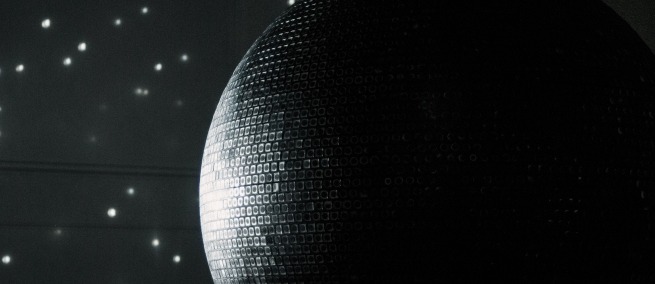
The sun will disappear from sight on August 21 of 2017. The Moon will come close enough to Earth to block views of the Sun thereby creating a total solar eclipse. In place of the sun will be a black hole. Those in 14 states across the country–from Oregon, through Wyoming, to South Carolina–will be able to look directly at it mid-afternoon. The black sphere will be backlit by rays; the rays are the sun’s corona. The corona is the plasma that surrounds the sun, which is hotter than the surface of the sun reaching about one million degrees. Solar eclipses have been documented throughout history. This solar eclipse will reach totality–when there is perfect alignment of the planets–only in America.
This once-in-a-lifetime event is a chance to make observations and measurements of the sun. Observers once documented solar eclipses with drawings. Now, telescopic photographs can capture the same celestial event with much greater precision. The multimedia artist Katie Paterson created an installation that culls images of every stage of a solar eclipse from the body of 10,000 which have been created since a drawing in 1778. She printed each individual image onto a mirrored panel, and then inserted it into a disco ball spanning 32.5 inches. Each row is arranged in the order that the sun eclipses, so begins with quarter eclipses and finishes with totality. Her piece, Totality, is now on view at the Wexner Center for the Arts in Ohio.
“With Totality, I was trying to make a cosmic object which brings together the immense history of solar eclipses that have occurred across time,” Paterson, who is represented by James Cohan Gallery, told Science & Film on the phone from her studio in Berlin. “It became like a cosmic dance. The artwork creates a sublime disco, bringing together the history of these experiences. That is why I collected the images from such different sources. From snaps people posted to high tech images from observatories and ancient drawings, the piece shows the range of ways people have been looking at and experiencing eclipses.”
Earth’s latest total solar eclipse will be on August 21. The next totality viewable from the United States will be in 2024. A new Sloan-supported book by David Baron, American Eclipse, is about the total solar visible in the United States in 1878. Totality hit from Montana to Texas. Thomas Edison went to Wyoming to measure the sun’s heat during the event, and astronomer Maria Mitchell, the first professor at Vassar, took a trip of alumnae to witness the eclipse.
Cover photo: Photo © Flora Bartlett. Courtesy of the Arts Council Collection. Installation view Sommerset House.
TOPICS